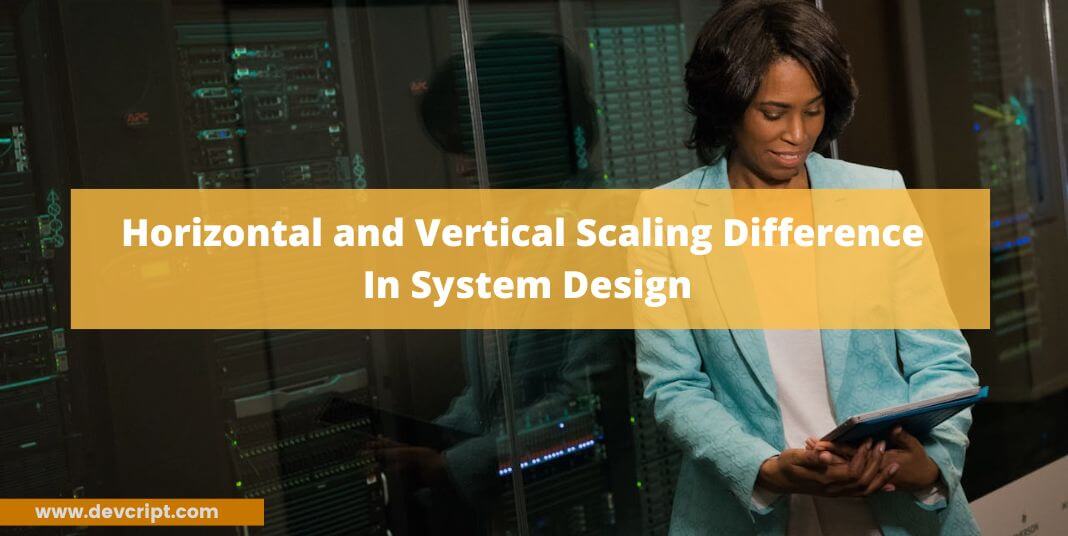Scaling is very crucial for any engineering team as it involves the ability to handle growth efficiently. It refers to the process of increasing the capacity of a system to accommodate higher demands, whether it be a growing user base, increased data processing requirements, or expanding functionality. An effective scaling method allows engineering teams to ensure consistent performance even as demand grows and enhances flexibility to adapt to changing requirements. Horizontal and Vertical Scaling are two major processes of scaling your distributed system.
In this article, we will learn about Horizontal and Vertical Scaling approaches, their advantages and disadvantages, and by prioritizing scaling strategies, engineering teams can build robust, future-proof systems that can evolve with the demands of the business and users.
Horizontal Scaling
Horizontal Scaling also known as ‘scaling out’ refers to adding more machines to the existing infrastructure to distribute the incoming workload across each machine, thus increasing the capacity and scaling the overall system’s performance. In this approach, you don’t need to worry about changing or upgrading any existing system’s components.

Also read, Azure Virtual Machine Scale Set.
Advantages
- Incoming workload traffic can be managed effectively.
- Has high fault tolerance, if one system is down, other machines can manage requests without shutting down the whole system
- Continuous availability is promised
- It is easy to scale or downscale according to one’s needs,
- Setting up cost is less
Disadvantages
- Managing communication and request ques is more complex
- Need more space to add and power to run more machines.
Also Read, Understanding Throttling in JavaScript
Vertical Scaling
Vertical Scaling also known as ‘scaling up’ refers to increasing the existing machine capacity of an individual or each hardware component of the system. In other words, you can add better processors, increase RAM capacity, or increase the power of any other part within the system. Vertical Scaling aims to increase the capacity and performance of the system to handle more workload without changing or adding more machines to the existing infrastructure.

Advantages
- Very easy to implement and use
- The cost of space and power is less
- It is easy to maintain and has less complex communication as a single machine is managing all the workload.
Disadvantages
- There is a limit to the amount we can upgrade a machine
- Higher possibility for downtime, as a single machine is handling all the incoming workload, for maintenance or upgradation you need to close down your system for a bit.
- As a single machine handles all the incoming workload, it becomes a single point of failure. At any fault, your whole operation will be shut down.
Also Read, Why System Design is important for a Developer!
Difference Between Horizontal and Vertical Scaling
Both Horizontal and Vertical scaling come with their benefits and limitations, as there is no one-size-fits-all for all one needs, one has to select a scaling solution as per one needs and resources. Here are a few factors you need to consider before choosing your scaling solution.
| Horizontal Scaling | Vertical Scaling |
|---|---|
| Load Balancing is required as it needs to divide all traffic workload among all the machines. | Load Balancing is not required as only one machine handles all traffic workload. |
| If one of the machines becomes faulty, the other machine can manage the incoming traffic workload. | Single point of failure:- As only one machine is managing all the traffic workload, if the machine becomes faulty, your whole operation stops. |
| Communication between machines which generally happens over the network can be slow. | Communication in one machine is internal, known as Inter-process communication, and is fast compared to communication over the network. |
| Maintaining data consistency and event queues is difficult and complex, as each machines have to communicate systematically, to reduce loss or duplication of any process. | As one system handling the data operations and event executions, it is very easy to maintain data consistency. |
| There is no machine limitation in Horizontal scaling as you can add or remove many machines as per your requirement. | There is a Hardware limitation in Vertical scaling as you can’t increase the power or performance of the machine after a certain point. |
Also Read, Understanding System design concepts by running a Pizza Shop
Final Words
The hybrid solution for scaling is Horizontal scaling only. Initially, you can vertically scale as much as you like, later on when you have a large user base you can shift to Horizontal Scaling. In this blog, we discuss different methods of scaling, You need to prioritize your requirements for example, you need your system to be Resilient, or data consistency is more important! There always going to be some trade-offs and that’s what designing a system design is!
I hope you like this article, feel free to share it more with your friends, colleagues, or family. Do let me know how you found this article! Do check out more amazing articles on various topics like Data Structure & Algorithms, React, JavaScript, or Java.

Leave a Reply